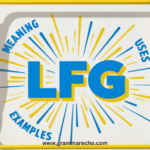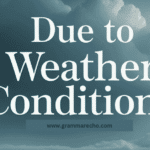When it comes to figurative language, understanding the difference between analogy vs simile can often leave people confused. Both are powerful tools for creating vivid imagery and enhancing communication. However, they serve distinct purposes in writing.
In this article, we’ll explore these two literary devices, providing clear explanations and examples. Whether you’re crafting a story or simply trying to clarify a complex concept, knowing when to use an analogy vs simile can elevate your writing. So, let’s dive into the world of comparisons and learn how these techniques can transform your communication skills.
What is an Analogy?

An analogy is a comparison between two different things that highlights a similarity in their structures or functions. It often serves to clarify an idea or concept by relating it to something more familiar. For instance, when explaining how the nervous system operates, one might say it acts like a communication network analogy, where the brain functions as a central hub, sending signals throughout the body.
Examples of Analogy
Here are some scenarios that illustrate the use of analogies:
- Saving Money Analogy: Saving money is like planting a tree. You must nurture it over time, but eventually, it will bear fruit.
- Cultivating Company Culture Analogy: Building a strong company culture is akin to growing a garden; it requires effort, attention, and the right environment to flourish.
These examples show how analogies can simplify complex ideas, making them relatable and easier to understand.

Origins of Analogy
The term analogy comes from the Greek word analogía, meaning “proportion” or “relation.” Historically, analogies have been a staple in rhetoric and philosophy, helping thinkers like Aristotle articulate profound ideas through relatable comparisons.
You will like: What’s the Plural of Syllabus? Syllabusesor Syllabi?
What is a Simile?
A simile, on the other hand, is a figure of speech that makes a direct comparison between two unlike things using the words “like” or “as.” Similes create vivid imagery and enhance descriptive writing by painting a clearer picture for the reader.

Examples of Simile
Consider these simile examples:
- Simile in Literature: “Her smile was as bright as the sun.” This comparison provides a clear image of brightness and warmth.
- Descriptive Writing: “The night sky was like a dark blanket, heavy and soft.” This simile evokes a sensory experience, allowing readers to visualize the scene.
Similes are particularly effective in poetry and prose, where they can evoke emotions and create visual imagery.
This is also on our list of: Axle or Axel-What’s the Difference?
Origins of Simile
The word simile originates from the Latin similis, meaning “like” or “similar.” This literary device has been used throughout history, from classical poetry to modern storytelling, to enhance the expressiveness of language.
Analogy vs Simile: The Differences

While both analogies and similes involve comparisons, they serve different purposes in writing. Here’s a quick comparison:
| Feature | Analogy | Simile |
| Structure | Compares complex ideas or concepts | Direct comparison using “like” or “as” |
| Purpose | Clarification of a concept | Vivid imagery and emotional impact |
| Length | Often longer and more detailed | Generally shorter and more concise |
| Function | Explains relationships or functions | Enhances description and imagery |
Choosing the Right Tool
Understanding when to use an analogy or a simile is crucial for effective communication. Use an analogy when you want to explain a complex concept or illustrate a relationship. For example, when teaching with analogies, saying, “The mitochondria are the powerhouse of the cell” helps students grasp the function of mitochondria by relating it to a familiar concept.
Conversely, opt for a simile when you aim to create vivid imagery or evoke emotion. For example, saying, “Time flies like an arrow” helps convey the fleeting nature of time in a relatable way.

The Shared Function of Analogies and Similes
Both analogies and similes serve a shared function in writing: they enhance understanding and engagement. By using these literary devices, you can make your writing more relatable, inviting readers to connect with your ideas on a deeper level.
This is also on our list of: What is the Past Tense of See and its Past Participle?
The Role of Imagery
Imagery plays a vital role in both analogies and similes. Analogies often rely on illustrative comparisons to clarify ideas, while similes create visual imagery that engages the senses. For instance, an analogy about juggling schedules could illustrate the complexity of managing multiple tasks, while a simile describing someone’s workload as “heavy like a boulder” paints a picture of burden and effort.
Effective Communication through Analogies and Similes
To master the use of analogies and similes, consider the following tips:
- Know Your Audience: Tailor your comparisons to suit the understanding and experiences of your audience.
- Be Clear and Concise: Avoid convoluted analogies or overly complex similes. Clarity is key to effective writing.
- Use Context: Provide enough context so that your reader understands the comparison. For example, when using an immune system analogy, explain how the immune system defends the body, likening it to a fortress protecting its inhabitants.
- Practice with Examples: Experiment with crafting your own analogies and similes. The more you practice, the more natural they will become in your writing.
Analogy and Simile in Literature
Both analogies and similes have a rich history in literature. They enhance storytelling by adding depth and clarity. Here are a couple of examples from well-known works:
- Simile Example in Literature: In Shakespeare’s Romeo and Juliet, the line “My love is like a rose” employs a simile to evoke the beauty and fragility of love.
- Analogy Example: In George Orwell’s Animal Farm, the story serves as an analogy for the Russian Revolution, illustrating complex political concepts through the lens of farm animals.
These examples showcase how analogies and similes enrich the narrative, providing deeper insights into characters and themes.
Crafting Your Own Comparisons
As you develop your writing skills, consider different ways to create analogies and similes. Here are some techniques to help you:
Using Analogies for Complex Ideas
When tasked with explaining intricate ideas, try using analogies that relate to everyday experiences. For example, if you’re discussing the nervous system, you might say, “Think of the nervous system as a complex web of highways, where signals travel like cars, reaching their destinations to ensure the body functions smoothly.”
Creating Vivid Similes
To craft effective similes, focus on sensory details and emotional resonance. Instead of saying “the wind was strong,” you might say, “the wind howled like a pack of wolves, fierce and relentless.” This approach adds depth and engages the reader’s imagination.
Final Words
In conclusion, understanding Analogy vs Simile is essential for effective communication. Both tools enhance your writing, making complex ideas clearer and more relatable. By mastering their use, you can create vivid imagery and deeper connections with your audience.
FAQs
An analogy is a comparison that shows a relationship between two different things. It helps clarify complex ideas by relating them to something familiar.
A simile is a figure of speech that compares two unlike things using “like” or “as.” It creates vivid imagery in writing.
Analogies explain relationships or functions, while similes create direct comparisons for descriptive purposes.

Lily Suzi is an experienced blogger and the voice behind Grammar Echo. With a passion for language and a knack for storytelling, she explores the nuances of grammar and writing in a relatable way. Her insights not only educate but also inspire readers to appreciate the beauty of clear communication.








